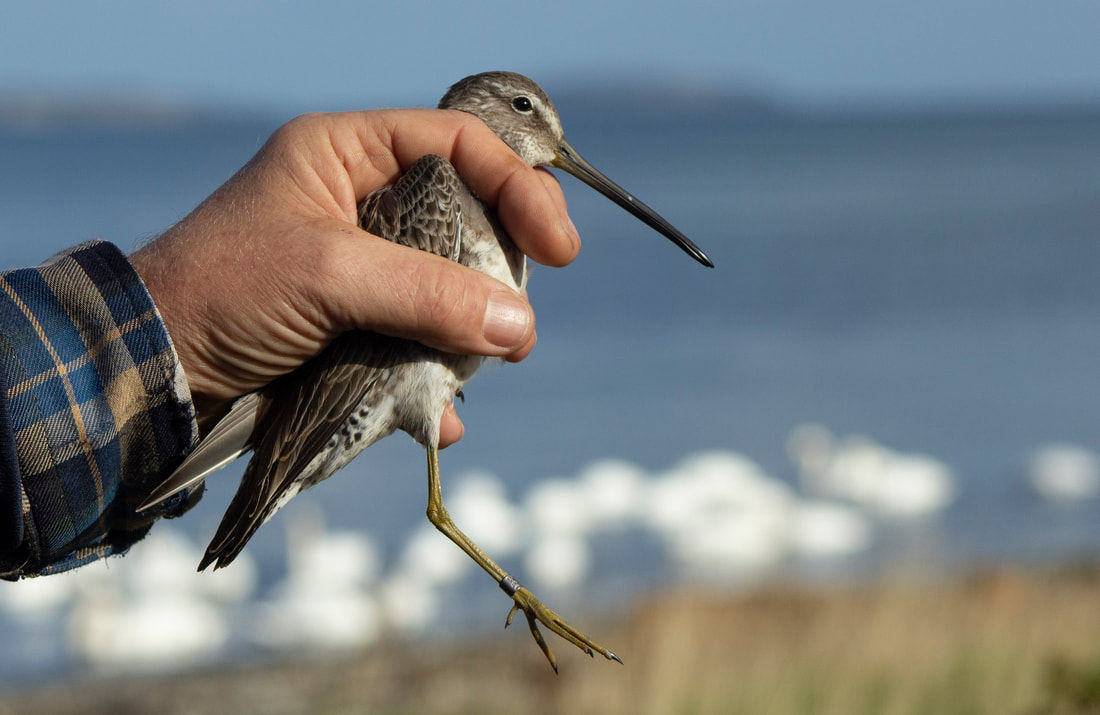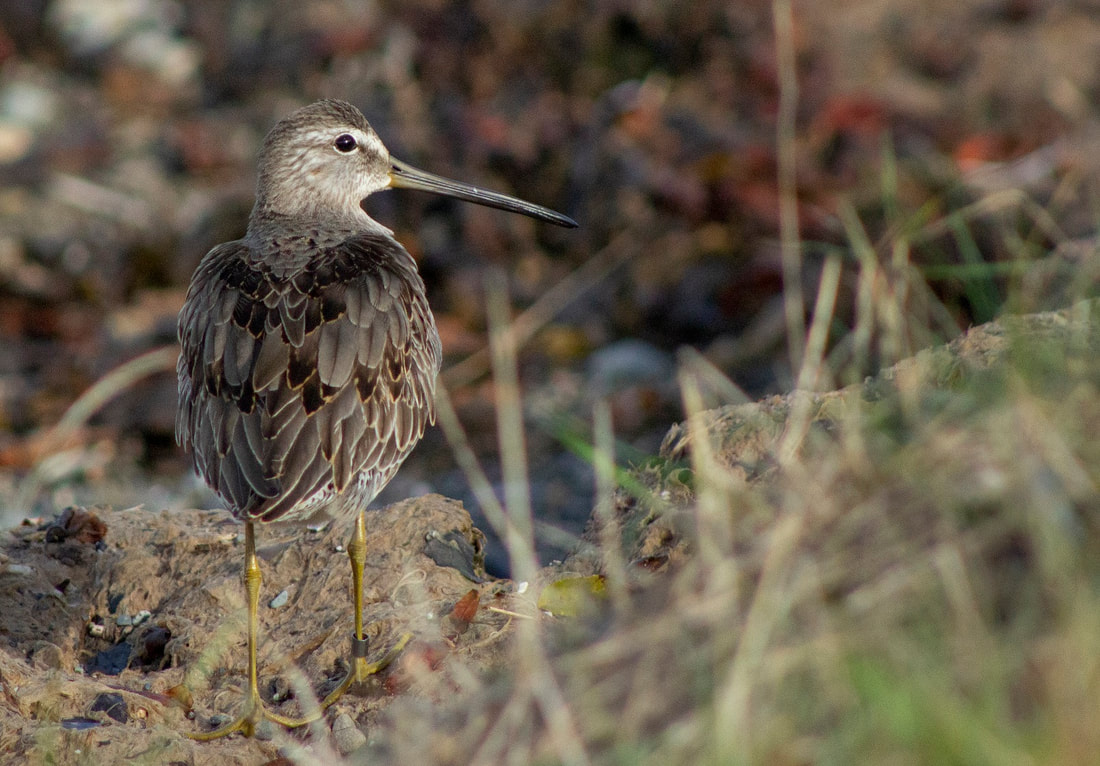 Long-billed Dowitcher just before it was released back onto Aber Ogwen (Joel Tragen) Long-billed Dowitcher just before it was released back onto Aber Ogwen (Joel Tragen) Much of our understanding of bird migration - and of breeding performance of birds in the UK - comes from ringers, highly trained in ways to safely catch and release birds. Usually self-funded, ringers are among the most dedicated ornithologists I know, each spending hours each month adding to our collective knowledge. More than 1.2 million birds in Wales have been ringed since the turn of this century. Shorebird ringers are especially hardy, patiently waiting hours on estuaries in winter for the right moment to catch a flock of birds, then quickly weighing, measuring and ringing them to minimise stress. The Shropshire, Conwy and Anglesey (SCAN) Ringing Group has been recording waders on the Menai Strait for decades and last weekend was targeting Redshanks for a long-term project at Aber Ogwen, when there was a surprise in the net. Along with 150 Redshanks, one of which had been ringed already, in Iceland, was a Curlew Sandpiper and a Long-billed Dowitcher. The Dowitcher was the real surprise, only the 23rd recorded in Wales and the ninth in the north. Little is known about its breeding, since it nests in northeast Siberia, one of the most remote places on earth. Some cross northern Canada in autumn and follow the Atlantic coast to winter around the Gulf of Mexico. Its English name originates from an Iroquois word, indicating that First Nation people were used to seeing Dowitchers pass through the Great Lakes over many centuries. Saturday’s catch was only the third Long-billed Dowitcher ever ringed in Britain & Ireland, the last in 1979! Of course, the chances of this ring being reported again is tiny, but you never know… Elsewhere in North Wales, highlights this week include a Black Tern past Rhos Point on Monday and a Little Stint there on Saturday. A Cattle Egret was at NWWT Spinnies and a Little Stint at Barmouth on Sunday, and Slavonian Grebe at RSPB Burton Mere Wetlands on Saturday. A Black Redstart and 70 Mediterranean Gulls are on Bardsey, with the island’s third Cetti’s Warbler, and Yellow-browed Warbler and Firecrest are in Wylfa Woods. The Red-breasted Goose remains at Ynys on the Afon Dwyryd, and Black-tailed Godwits have numbered an impressive 84 at Porthmadog’s Llyn Bach.
0 Comments
Leave a Reply. |
Bird notesA weekly update of bird sightings and news from North Wales, published in The Daily Post every Thursday. Archives
July 2024
Categories |

 RSS Feed
RSS Feed
